Weimar Bauhaus Old & New, UNESCO WHS
There’s a clear transition in time where architecture and design took a step from behind closed doors for the sole purview of the rich and royal and out into the open for public and general consumption. It’s no surprise the years from the end of the 19th-century into the 20th-century marked big changes, with Art Nouveau at the time as part of the Secession movement. Throughout Europe, rebellion and revolution were in the air, economically, politically, and culturally.
The Bauhaus movement also helped initiate a conversation, creating and fostering a relationship between industry’s machinery and artistic or cultural creativity. Bauhaus opened in Weimar in 1919, before moving to Dessau and Berlin. The rise of the National Socialists deemed Bauhaus “degenerate” and did all they could to eliminate a movement and her people deemed counter to National Socialist policy. With Bauhaus’ forced closure in 1933 by the Nazis, a number of practitioners escaped Germany to other parts of the world, including the United States and Argentina.
For their deep and wide-ranging influence on 20th-century art, architecture, and design, an incomplete list of names includes Martin Gropius, Lyonel Feininger, Gerhard Marcks, Paul Klee, Wassily Kandinsky, Oskar Schlemmer, Herbert Bayer, Irene Bayer (née Hecht), Karla Grosch, Hannes Meyer, Ludwig Mies van der Rohe, etc. In particular, László Moholy-Nagy would move to Chicago in the United States and established in 1937 the New Bauhaus which became the Institute of Design in 1944.
Tucked away on a university campus a few minutes south of the Weimar city centre, two important building lie across from each other: the Saxony Academy of Art1 building and the Grand Ducal Saxony School of Arts and Crafts (College of Applied Arts)2. The former is now the main building for the present-day Bauhaus University, and the latter now houses Bauhaus University’s Faculty of Design. In 1996, these two buildings formed a part of the UNESCO World Heritage Site (WHS) listing and designation for Bauhaus sites in Weimar and Dessau.
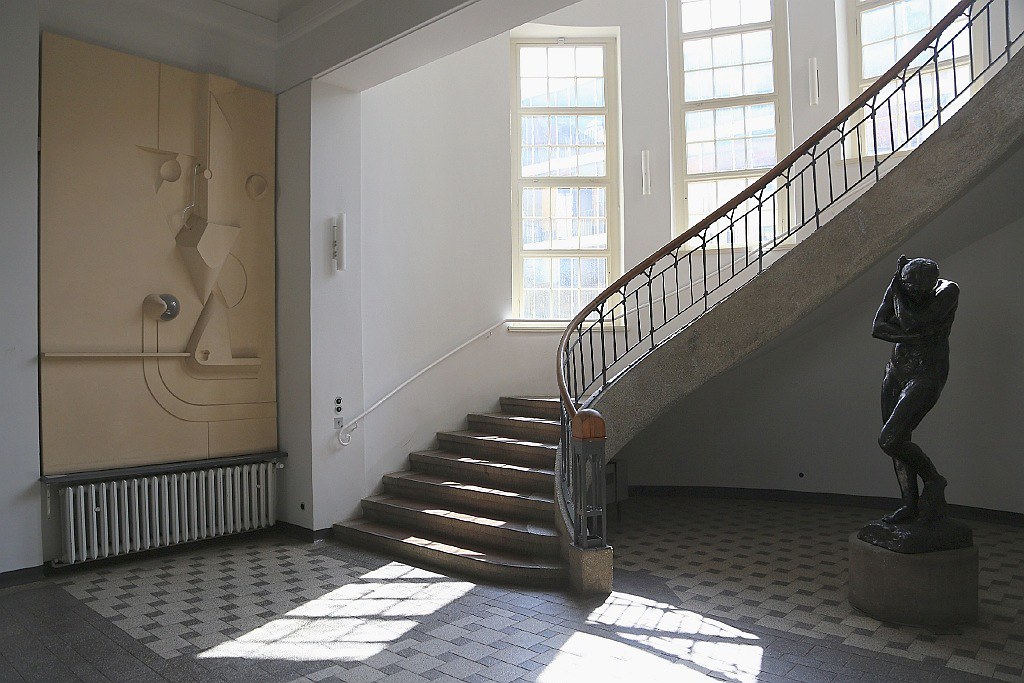
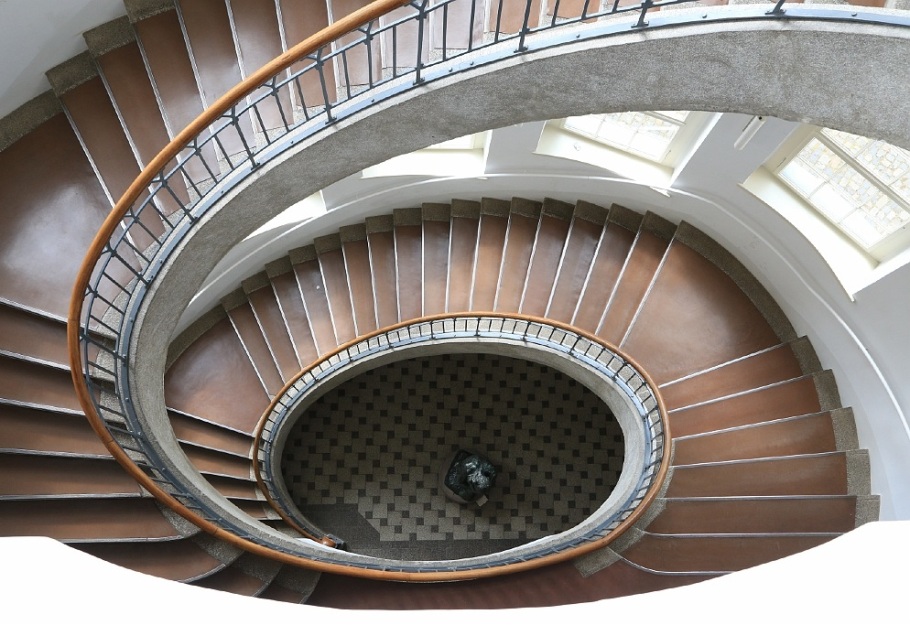
Central elliptical staircase with Rodin’s “Eva” on the ground floor: Uni-Hauptgebäude.
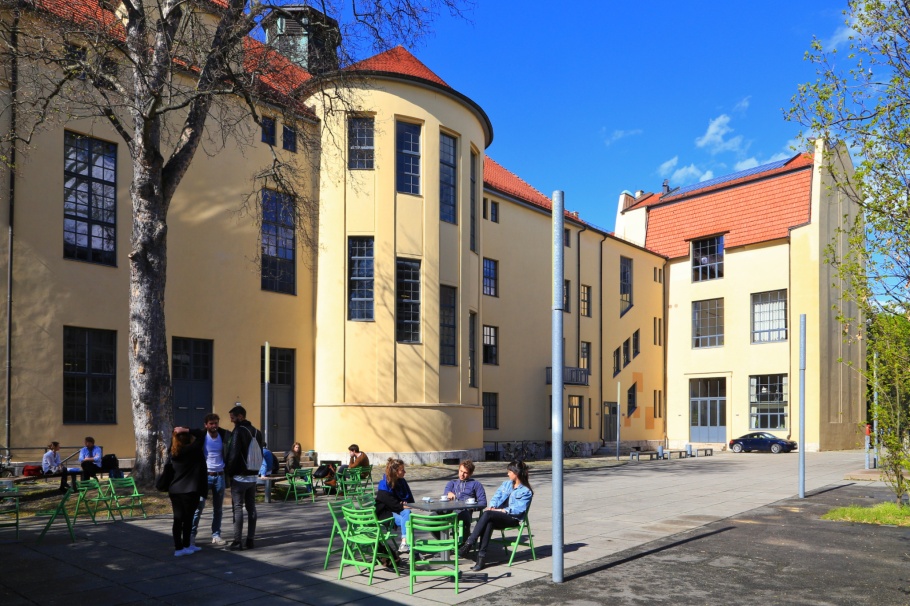
Rear exterior, main building, Bauhaus University – 30 Apr 2015.
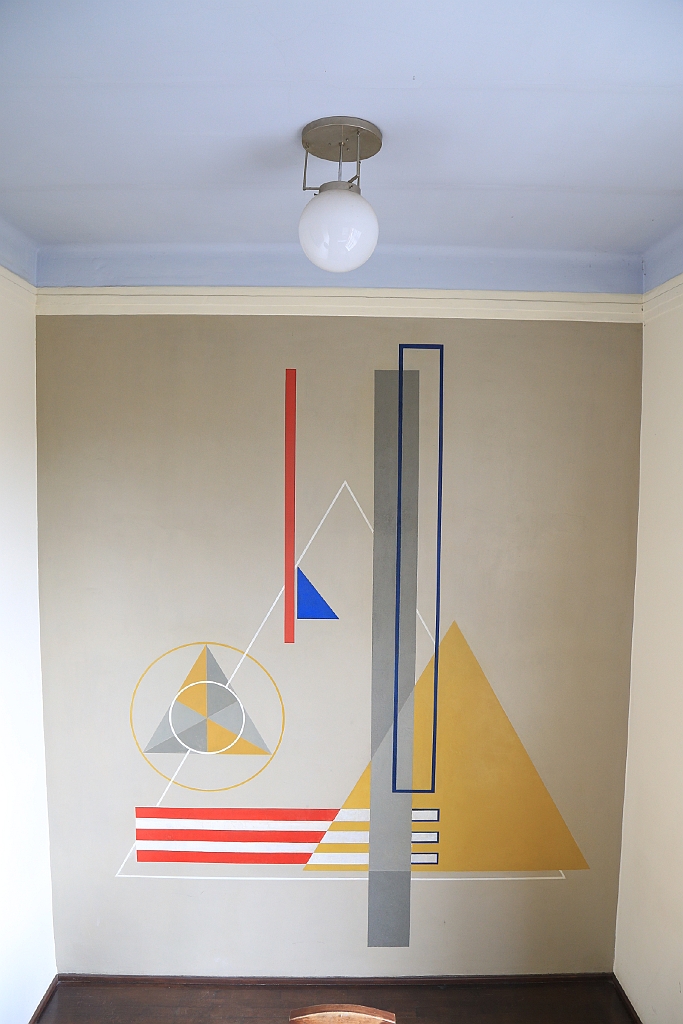
“Dreieck” (Triangle), by Herbert Bayer. Side stairwell, Uni-Hauptgebäude.

“Quadrat” (Square), by Herbert Bayer. Side stairwell, Uni-Hauptgebäude.
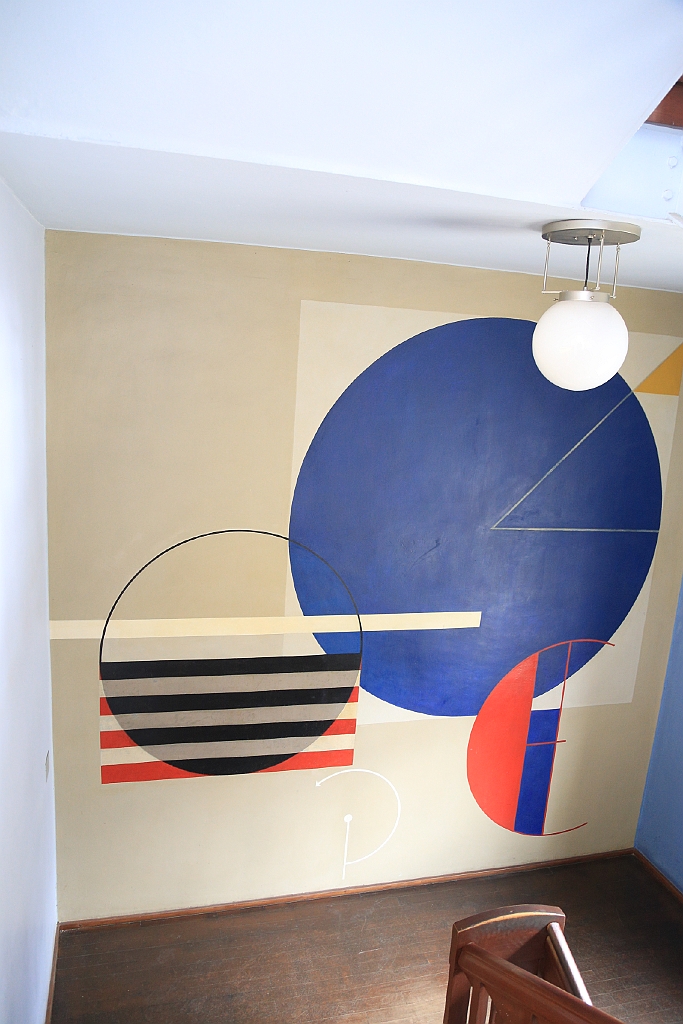
“Kreis” (Circle), by Herbert Bayer. Side stairwell, Uni-Hauptgebäude.
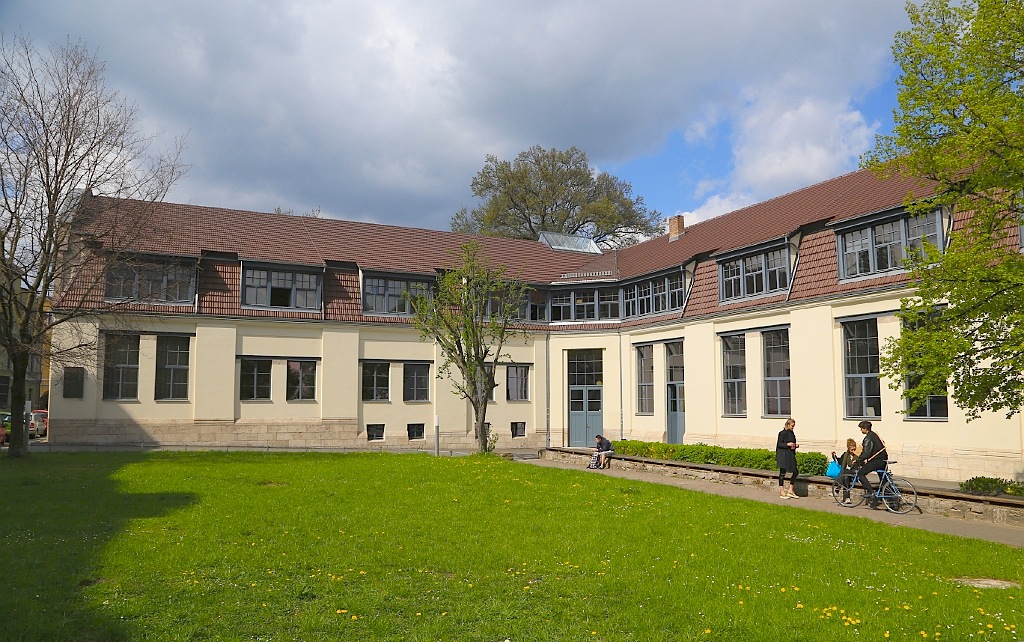

Piece by Oskar Schlemmer: front entrance, Van-de-Velde building.
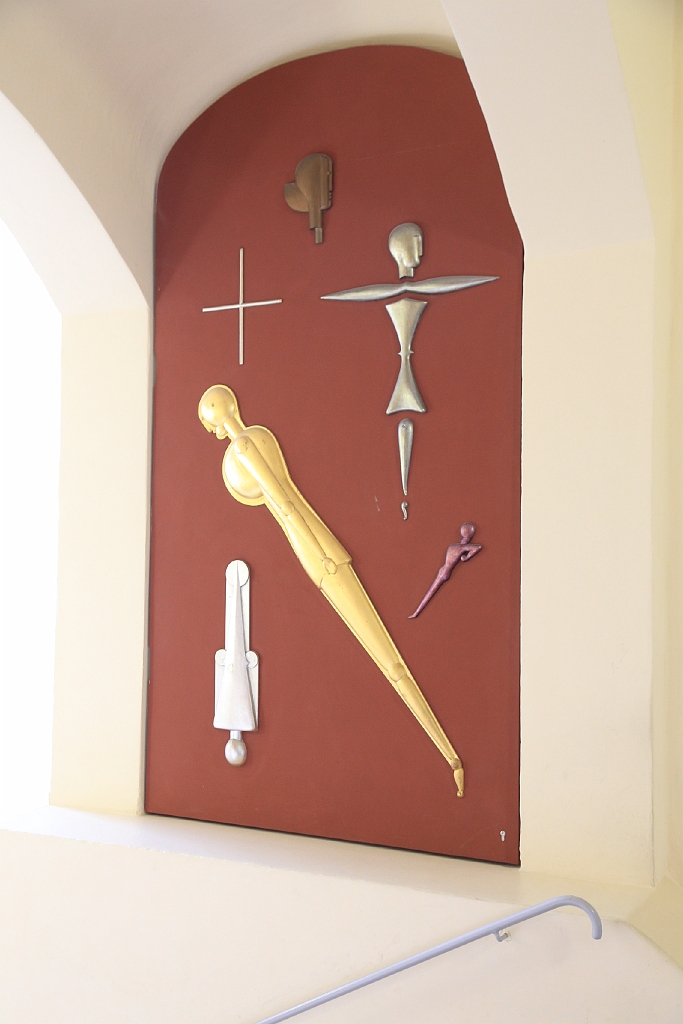
Piece by Oskar Schlemmer: front entrance, Van-de-Velde building.
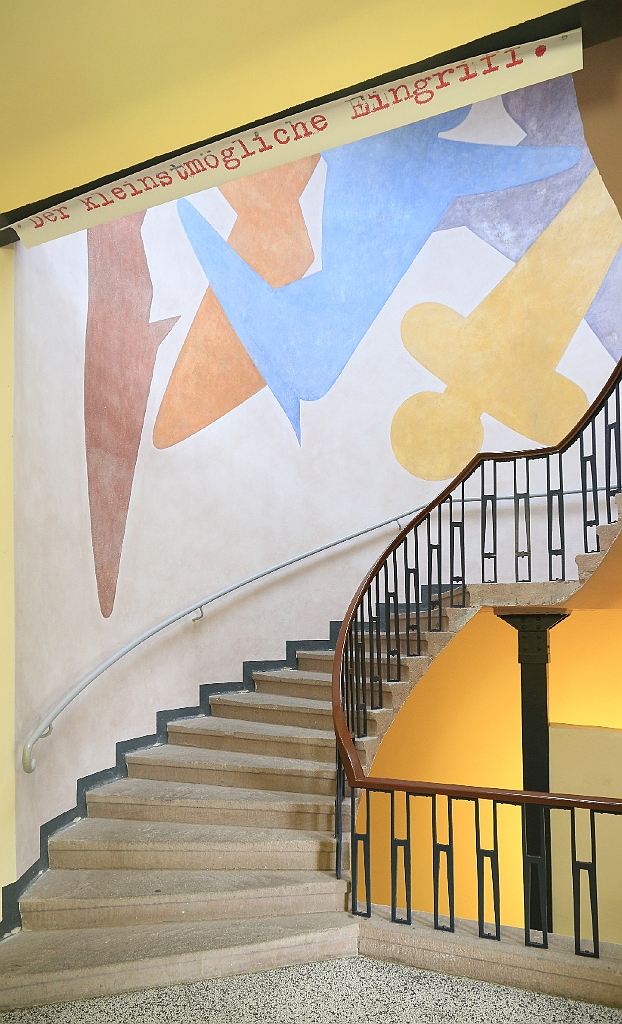
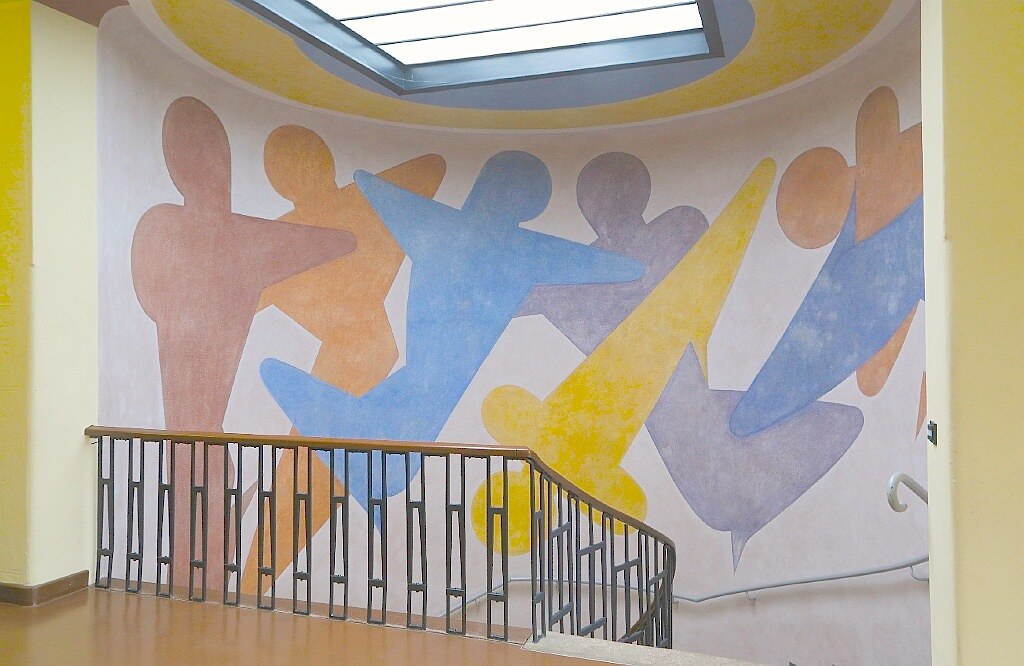
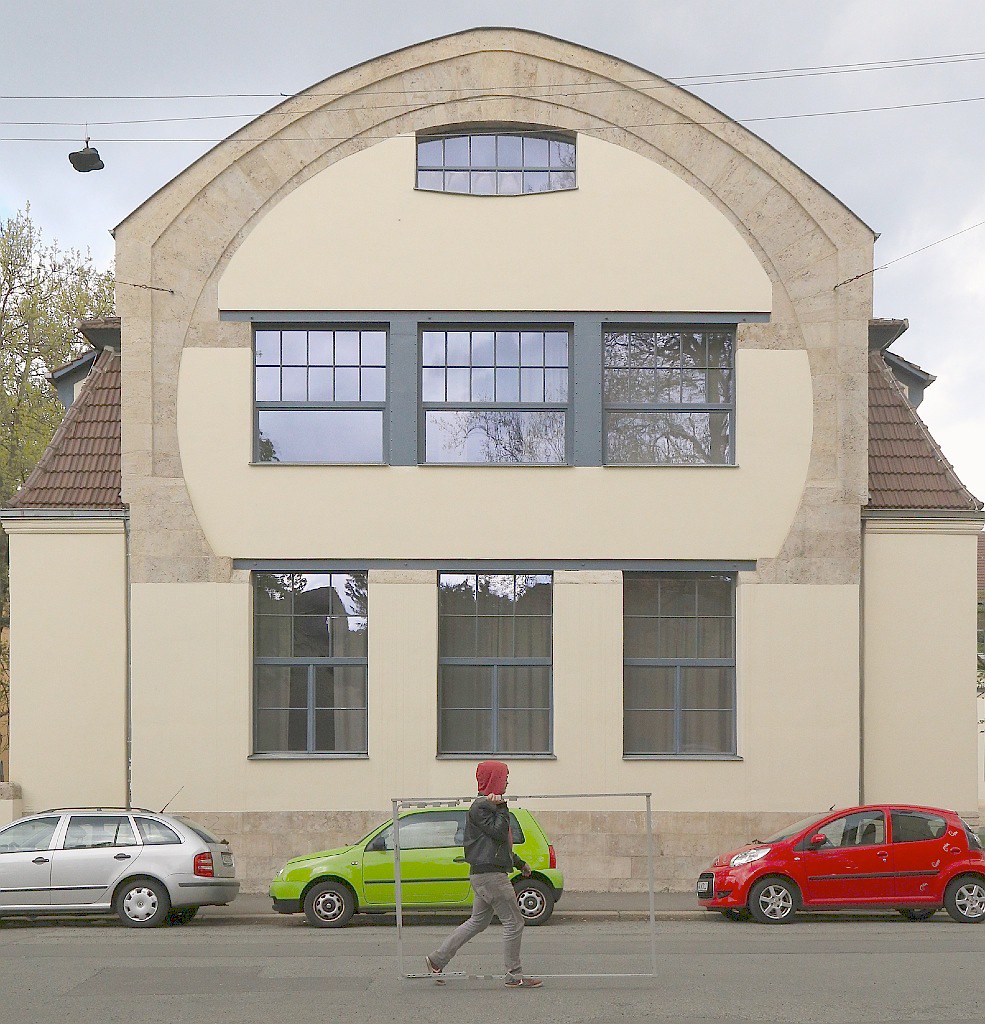

More
1 Was: Grossherzoglich-Sächsische Kunstschule Weimar. Now: main building for Bauhaus University.
2 Was: Grossherzoglich-Sächsische Kunstgewerbeschule Weimar, “Winkelbau”. Now: Faculty of Design, Bauhaus University.
• Weimar listing to Bauhaus Sites
• UNESCO World Heritage Site listing
• UNESCO Welterbe Germany, in English
• Bauhaus Kooperation
• A warning: how the “degenerate art” label might still be used against present-day art
I’m very grateful to Weimar Tourism, Thüringen Tourismus, Germany National Tourism Board for access to places and activities in the city; and to Dorint Hotel am Goethepark for a comfortable and welcoming stay. Special thanks to Renée Cieraad for the guided tour, and Anja Friedrich from Weimar Tourismus for the warm hospitality. I made all photos above on 29 and 30 April 2015. This post appears on Fotoeins Fotografie at fotoeins DOT com at http://wp.me/p1BIdT-76F.
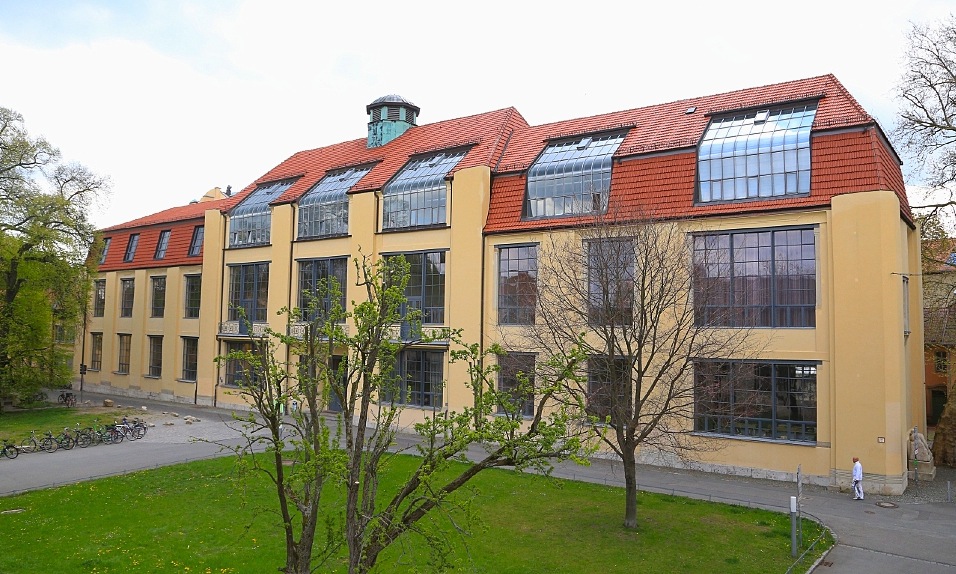
8 Responses to “Weimar Bauhaus Old & New, UNESCO WHS”
I really enjoyed this post, thank you for sharing
LikeLiked by 1 person
Thanks, Cornelia, for reading and for your comment. There’s a lot to see and learn in the “middle of Germany”!
LikeLike
Bauhaus is something very special. Really enjoyed these pictures . During a school trip to Weimar we checked out some of the history and buildings back in 2005 🙂
LikeLiked by 1 person
Hi, Timo. I now must visit the Bauhaus sites in Dessau and Berlin! I had no expectations except for historical significance, but I very much enjoyed my time in both Erfurt and Weimar. I would like to go back again, especially to Eisenach and Jena.
LikeLiked by 1 person
[…] Weimar UNESCO WHS: Bauhaus Old and New • Weimar UNESCO WHS: Duchess Anna Amalia Library • Weimar: an instant walk […]
LikeLike
[…] Weimar UNESCO WHS: Bauhaus Old and New • Weimar, Bauhaus, and UNESCO (Fotoeins […]
LikeLike
[…] and others would move to Weimar to establish a centre of art, design, thought, and attitude for Bauhaus in 1919, eight years after inauguration of the […]
LikeLike
[…] Separate full post here. […]
LikeLike